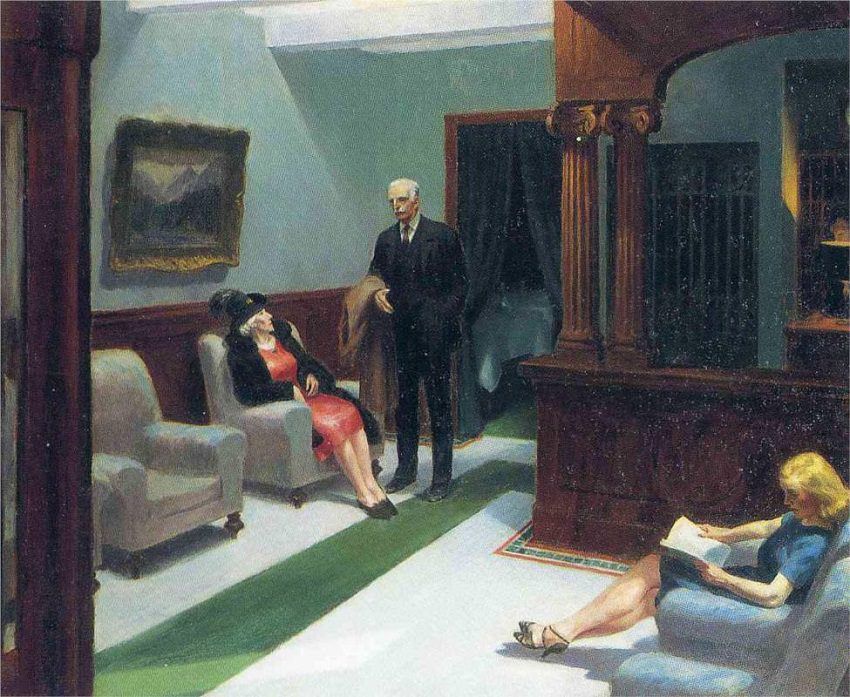Thanks to the Hopper Hotel Experience, You Can Now Spend a Night at the Museum
The Virginia Museum of Fine Arts will host guests in a 3-D recreation of Edward Hopper’s 1957 painting, ‘Western Motel’
/https://tf-cmsv2-smithsonianmag-media.s3.amazonaws.com/filer/d3/59/d3592e31-1037-4bd6-ac7f-a1d8edc0aae4/western_motel_vmfa.jpg)
This fall, the Virginia Museum of Fine Arts is set to host overnight visitors in a three-dimensional recreation of “Western Motel,” a 1957 painting by Edward Hopper. Dubbed the “Hopper Hotel Experience,” the unusual initiative is tied to the VMFA’s Edward Hopper and the American Hotel exhibition, which will be on view for the duration of the makeshift motel’s run.
Per a press release, the show—featuring more than 60 Hopper paintings, drawings, watercolors and illustrations, as well as selected postcards and diaries written by his wife, fellow artist Josephine—is the first to explore the American realist’s depictions of hotels, motels and other transient travel dwellings.
As Christopher Reynolds reports for the Los Angeles Times, tickets for the overnight experience, due to go on sale August 27, will range in price from $150 to $500 and include such amenities as dinner, curator-guided tours and an exhibition catalogue. More details regarding the room, which will be available for bookings on select Friday, Saturday and Monday evenings on 50 different dates between October 26 and February 23, 2020, are expected later this month.
“‘Western Motel’ is one of [Hopper’s] best known and most studied paintings,” exhibition curator Leo G. Mazow tells Observer’s Clayton Schuster. “We thought it’d be fun and enlightening for people to experience what it was like to be in these spaces, which Hopper stayed in so often and painted so frequently.”

Writing for Art Critique, Katherine Keener likens the voyeuristic undertones of “Western Motel” to Hopper’s most well-known work, “Nighthawks.” Although the painting’s lone subject, a blonde woman clad in a red dress and black heels, looks directly at the viewer, her gaze seems to elude, reinforcing the sense of alienation endemic to the artist’s oeuvre. As Ellen Gutoskey notes for Mental Floss, the room—its stark green walls punctuated by yellow curtained windows opening onto a generic mountain landscape, its furnishings limited to a red chair, a bed and a nightstand boasting a brass lamp—is far from a “warm and cozy” refuge; instead, the scene is “so neat it seems almost characterless.”
“American hotels have, since the 19th century, differentiated themselves by their kind and degree of hospitality,” Mazow says to Schuster. “In the U.S., the word hotel refers to a place, and a social function. There are these expectations at a hotel that exist outside of what we think of as everyday life. A lot of that, though, is understood best by what these structures are not, which is home or permanent.”
In addition to spotlighting “Western Motel,” Edward Hopper and the American Hotel will highlight “House at Dusk,” a 1935 painting acquired by the VMFA in 1953; borrowed items including “Hotel Lobby,” a 1943 work owned by the Indianapolis Museum of Art at Newfields (where the exhibition will travel following its Virginia run); and personal writings detailing the Hoppers’ extended road trips throughout the U.S. and Mexico. The show will also include 35 similarly hospitality-centric works by American artists such as John Singer Sargent, Edward Ruscha and Cindy Sherman.
“Edward Hopper is one the best-known 20th-century American artists, yet the public’s conception of him has largely been filtered through a time-worn biographical formula that explains his art as the product of a sullen, isolated introvert,” Mazow says in the press release. “Edward Hopper and the American Hotel endeavors to consider hotels, motels and other transient dwellings as vital subject matter for Hopper and as a framework with which to understand his entire body of work.”
Edward Hopper and the American Hotel is on view at the Virginia Museum of Fine Arts in Richmond from October 26 to February 23, 2020.
/https://tf-cmsv2-smithsonianmag-media.s3.amazonaws.com/accounts/headshot/mellon.png)
/https://tf-cmsv2-smithsonianmag-media.s3.amazonaws.com/accounts/headshot/mellon.png)